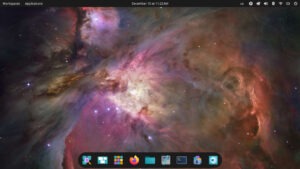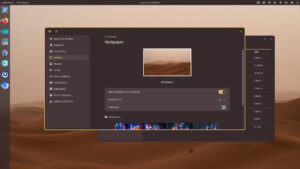Intel’s sudden shutdown of its high-performance Clear Linux OS has left enterprise users scrambling. Here’s where to go next.

“After years of innovation and community collaboration, we’re ending support for Clear Linux OS,” the notice started.
The notice was written by Arjan van de Ven, who among other things is Intel’s senior principal engineer of the Linux Kernel. He was announcing the ignoble demise of the Linux distribution Clear Linux OS. The chipmaker had just pulled the plug without warning while the patient was still breathing.
“Effective immediately, Intel will no longer provide security patches, updates, or maintenance for Clear Linux OS, and the Clear Linux OS GitHub repository will be archived in read-only mode,” he said. “So, if you’re currently using Clear Linux OS, we strongly recommend planning your migration to another actively maintained Linux distribution as soon as possible to ensure ongoing security and stability.”
This left many — from computer labs who use it in experiments to Fortune 500 companies who run it in their cloud-native infrastructures to tech hobbyists — scrambling to figure out what to do next.
“Seriously? No grace period, users are supposed to instantly migrate?” Liam Proven quoted one user saying in The Register. “That’s not very serious honestly.”
Clear Linux: Not Just Another Distro
Intel released Clear Linux in February 2015, at a time when it was still the world’s largest chipmaker by revenue, with 15.4% of the global market. The only company that came close was Samsung, with 11.3%. The rest of the chip market was divided up by a long list of also-rans, topped by the South Korean memory chip maker SK Hynix with a 4.9% share.
Although the distribution was originally released to demonstrate the performance of aggressively optimized Intel CPUs — particularly in cloud-native, containerized, and microservice environments — enterprises soon recognized the value of its Intel-specific optimizations. As a result, it was rapidly adopted in production settings, serving not only as a base image within containers but also as the underlying host for container platforms such as Docker, Kubernetes, and OpenShift. Its small footprint was also seen as a security advantage.
Its small footprint and low power requirements also made it a natural fit for edge deployments and IoT devices, especially when running on Intel hardware (though it also showed performance gains on AMD systems).
Intel’s Fall From Glory
Not only was Intel the top chipmaker back in 2015, when it came to CPUs, no one else even came close, and hadn’t for years.
In the x86 arena, AMD was its closest rival at the time, but it hadn’t been much of a threat for the better part of a decade (although in about two years it would again become a serious competitor). By then, IBM Power was pretty much confined to running on IBM hardware after Apple’s Macs had dropped it for Intel, Arm hadn’t yet seen much deployment as a CPU outside of mobile devices, and the prospect of RISC-V ever being a server or desktop CPU was a distant dream.
However, change was already happening. By 2017 AMD would begin recovering from its earlier fall with the release of Ryzen and EPYC, and Arm was seeing increasing use in data centers, driven by servers manufactured by Ampere and others. In 2020, Intel lost Macintosh to Apple’s Arm-based processors, and today it’s starting to feel additional pressure as RISC-V starts to be used in servers and consumer desktops and laptops.
There have been other factors as well. For one thing, CPUs are no longer the end-all and be-all, having been largely overshadowed by the needs of AI for GPUs. This market is dominated by Nvidia, a company that in 2015 was primarily making chips for gamers.
What this means is that although Intel remains one of the world’s top chip companies by revenue, its profits and growth have stagnated for much of this decade. Once inflation is factored in, its financial performance has actually been in decline.
Given that, it was probably inevitable that Intel would eventually quit devoting resources to developing and maintaining Clear Linux OS, which wasn’t directly contributing to the bottom line.
A Clear Day Doesn’t Last Forever
Generally when a distro with a lot of enterprise use decides to fold up its tents, someone comes along to fork it. Trouble is, Clear Linux is a different animal than most distros. To begin with, unlike most open source software which is developed in the open by a community of developers, Clear Linux was pretty much developed behind closed doors at Intel.
This was mainly by design: the distro was super optimized for Intel processors, and doubtlessly Intel-based developers used their inside knowledge on how Intel sausage is made — including secret ingredients — which kept them from being able to work closely with community developers outside the company.
In other words, what made Clear Linux special pretty much makes a community fork impossible.
While this puts a lot of organizations in the position of having to migrate without much notice, the good news is that there’s no shortage of options — although the use cases for the distro are so broad that none of the options is a one-size-fits-all solution.
For users who need the stateless/immutable model that Clear Linux OS offered there’s Fedora CoreOS, openSUSE MicroOS, or Ubuntu Core. For those who need the performance that the distro brought to the table with its aggressive optimizations there’s CachyOS, an Arch-based distro that has adopted many of Clear Linux’s performance-tuning aspects.
For everybody else, there’s all the usual suspects, meaning you have something like 300 Linux flavors from which to choose.
Christine Hall has been a journalist since 1971. In 2001, she began writing a weekly consumer computer column and started covering Linux and FOSS in 2002 after making the switch to GNU/Linux. Follow her on Twitter: @BrideOfLinux







